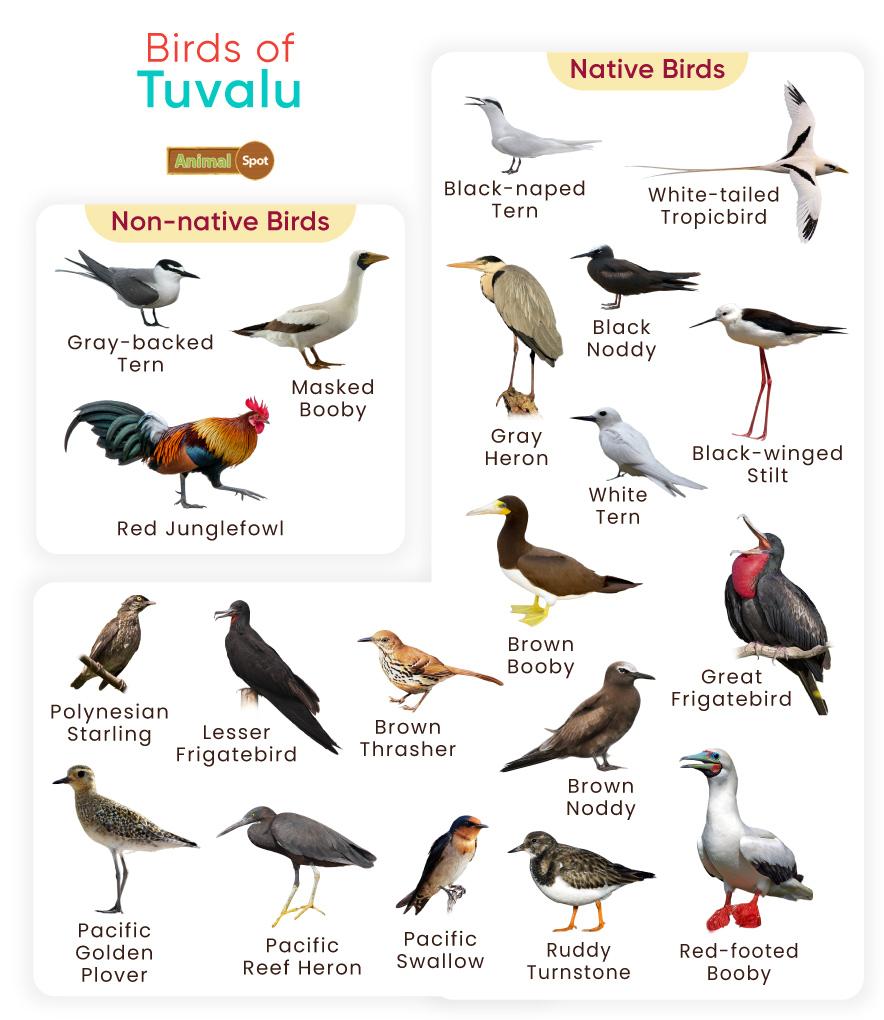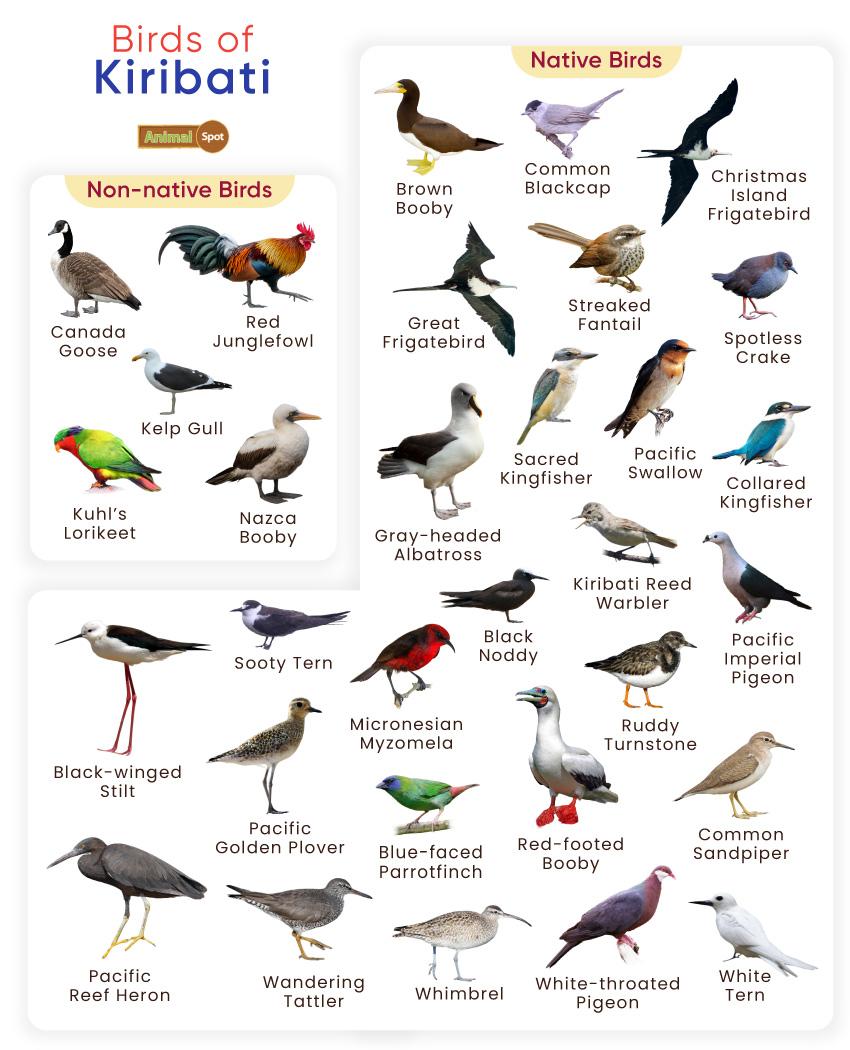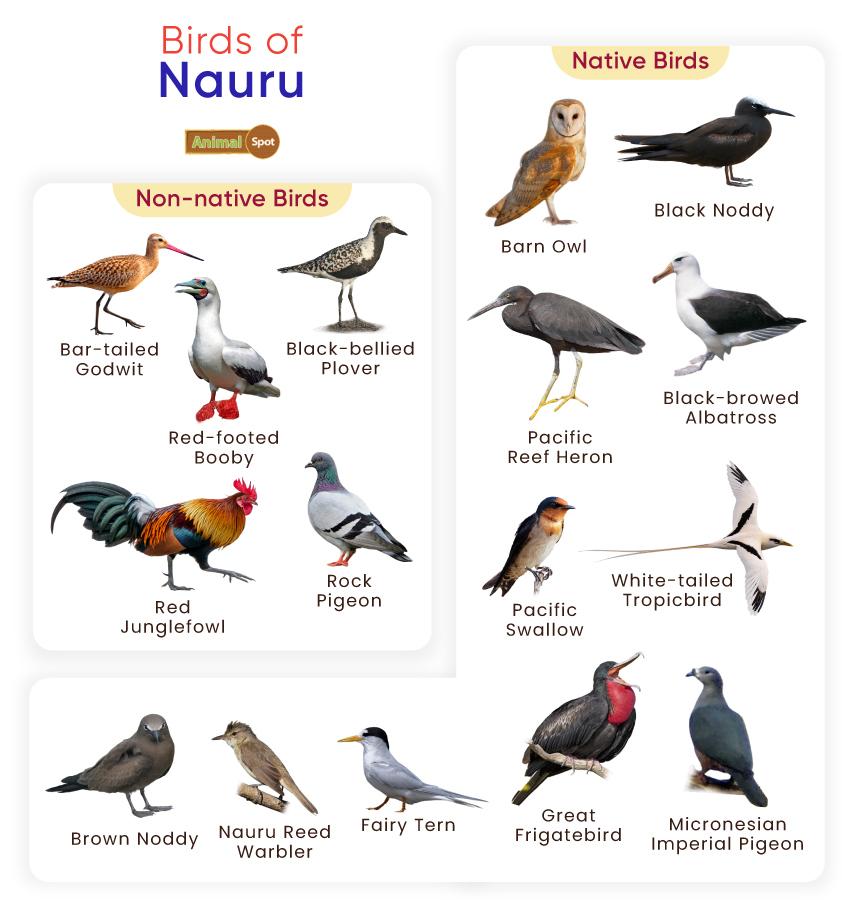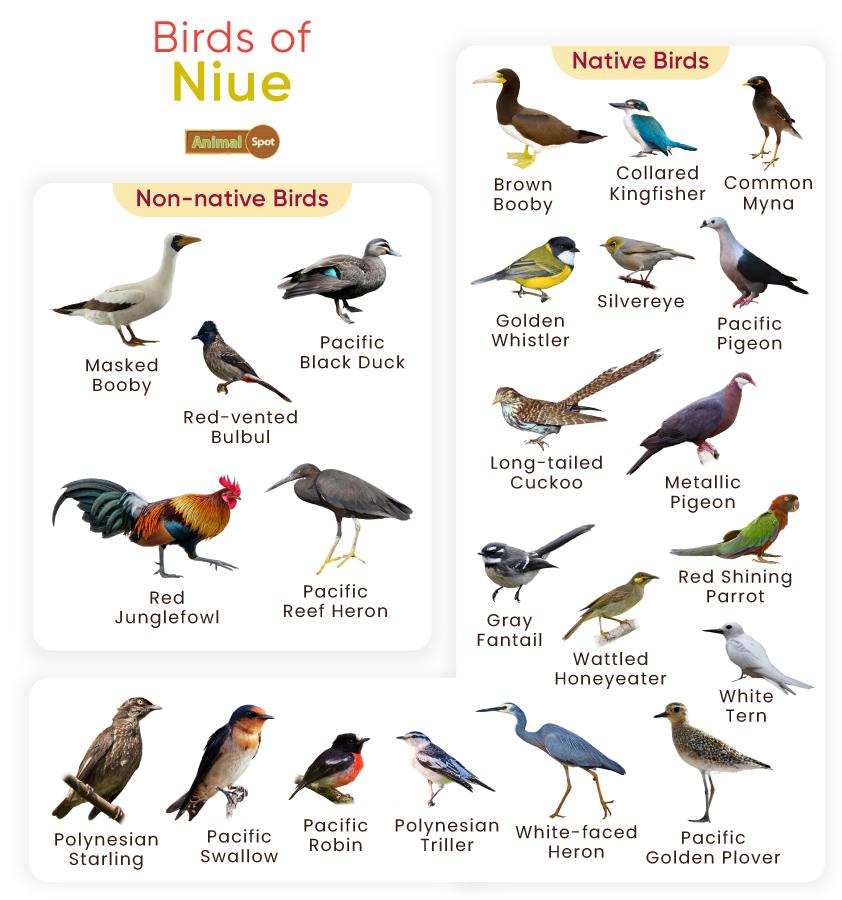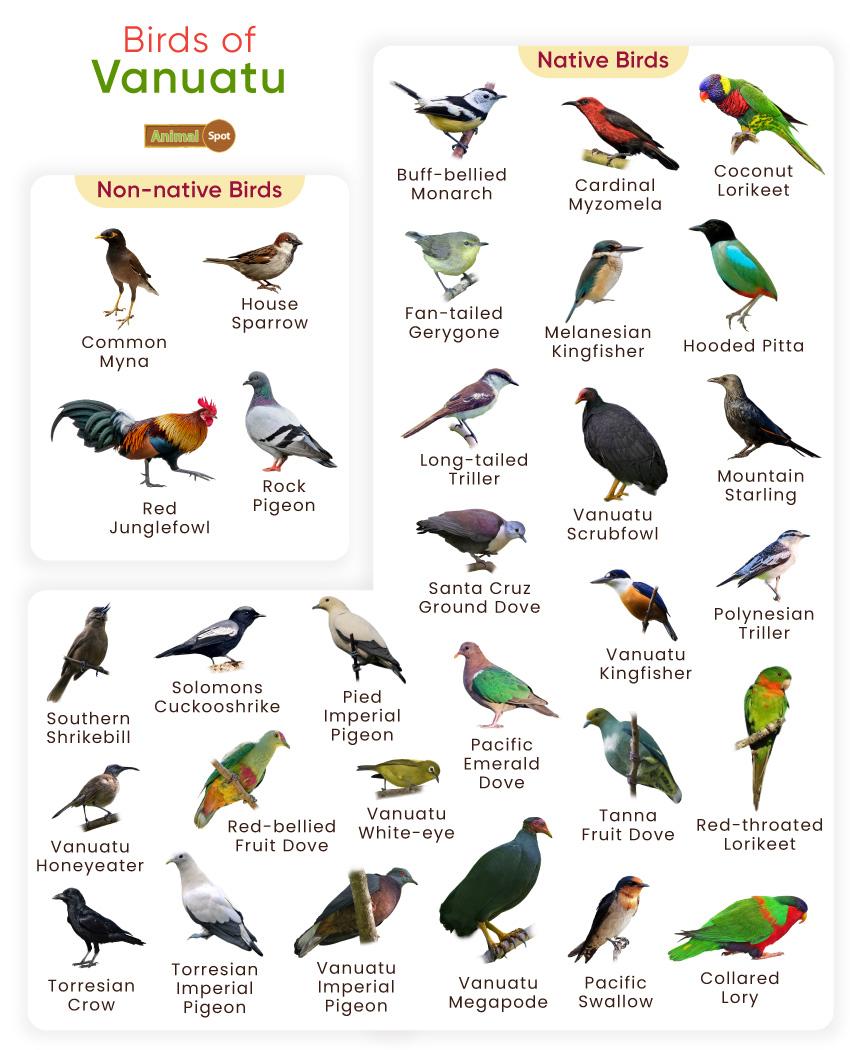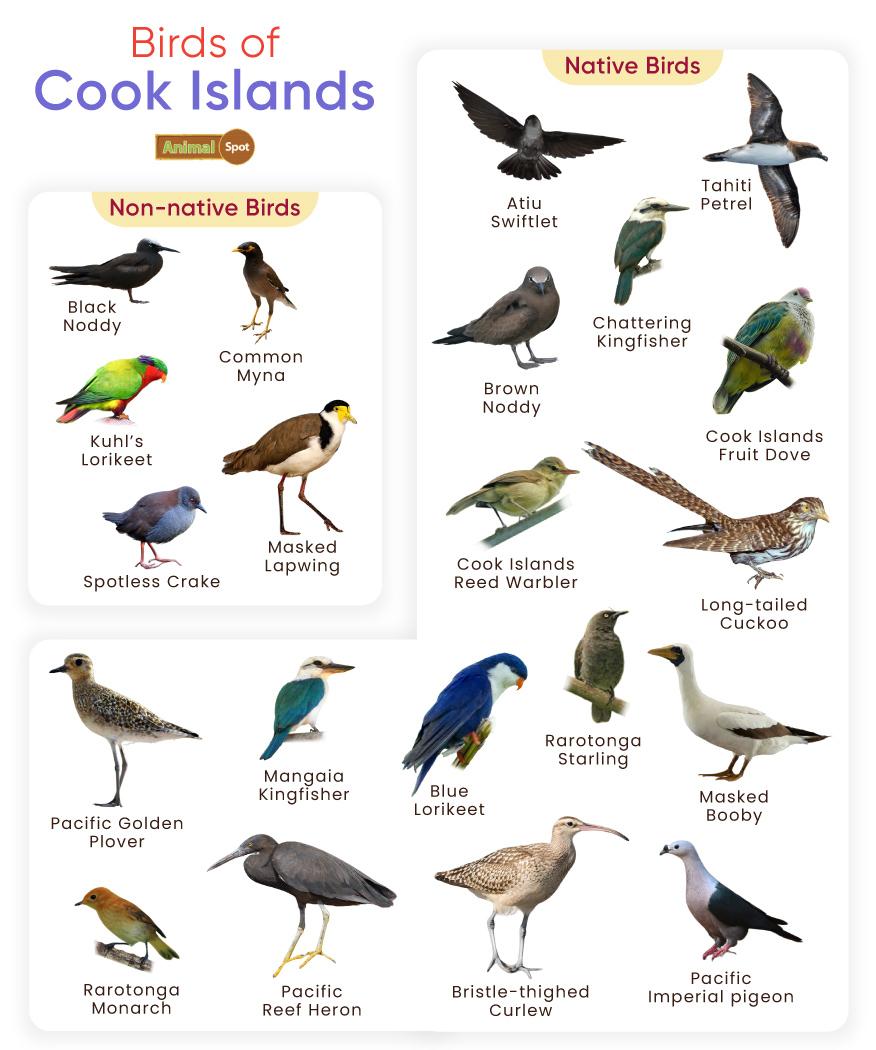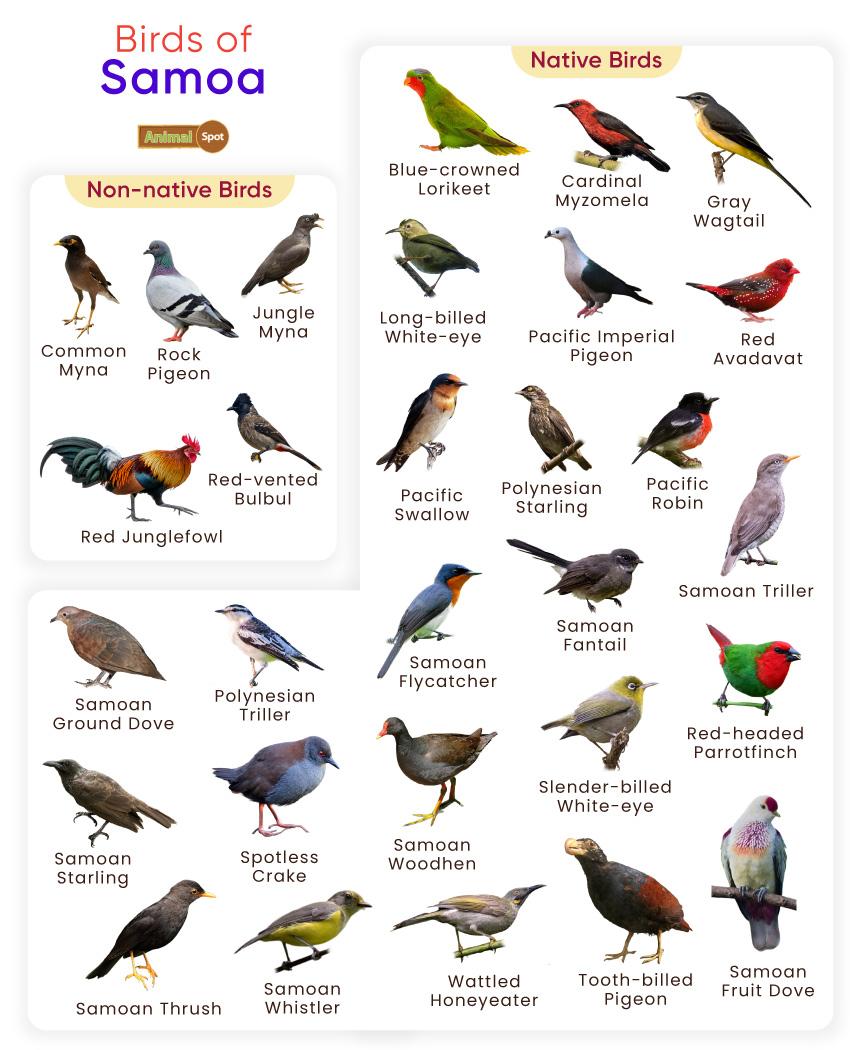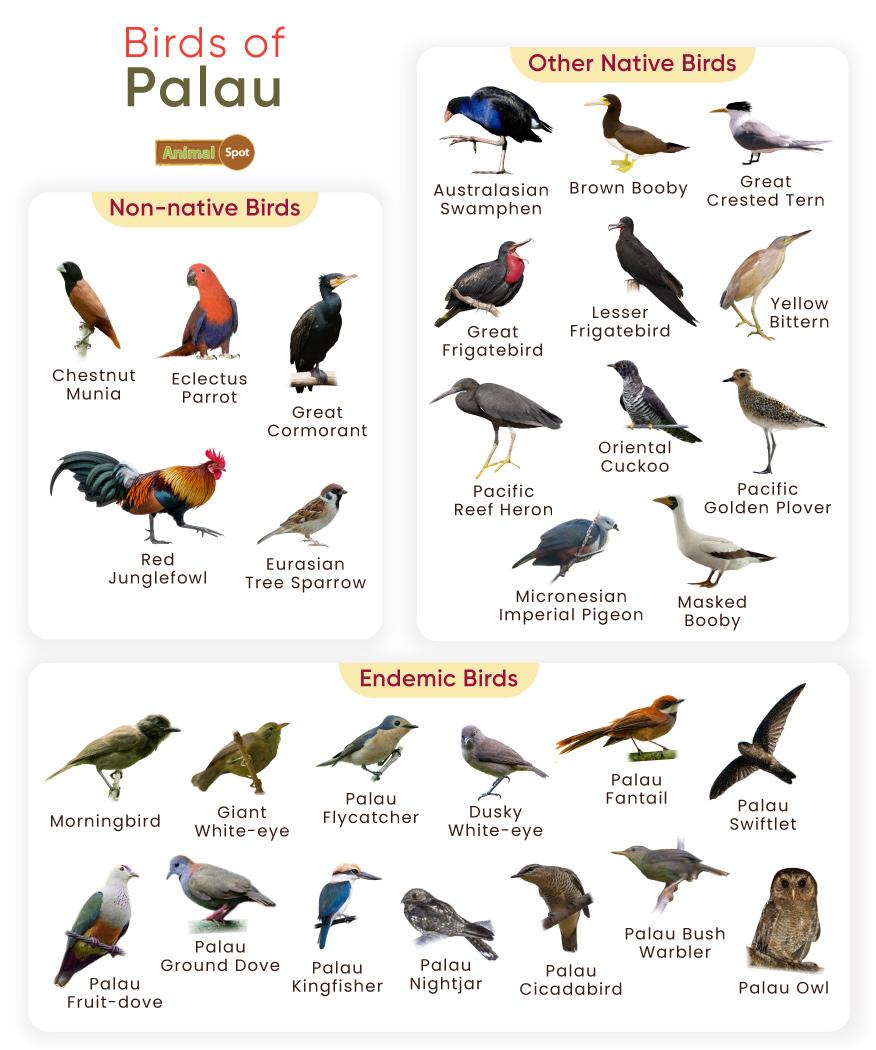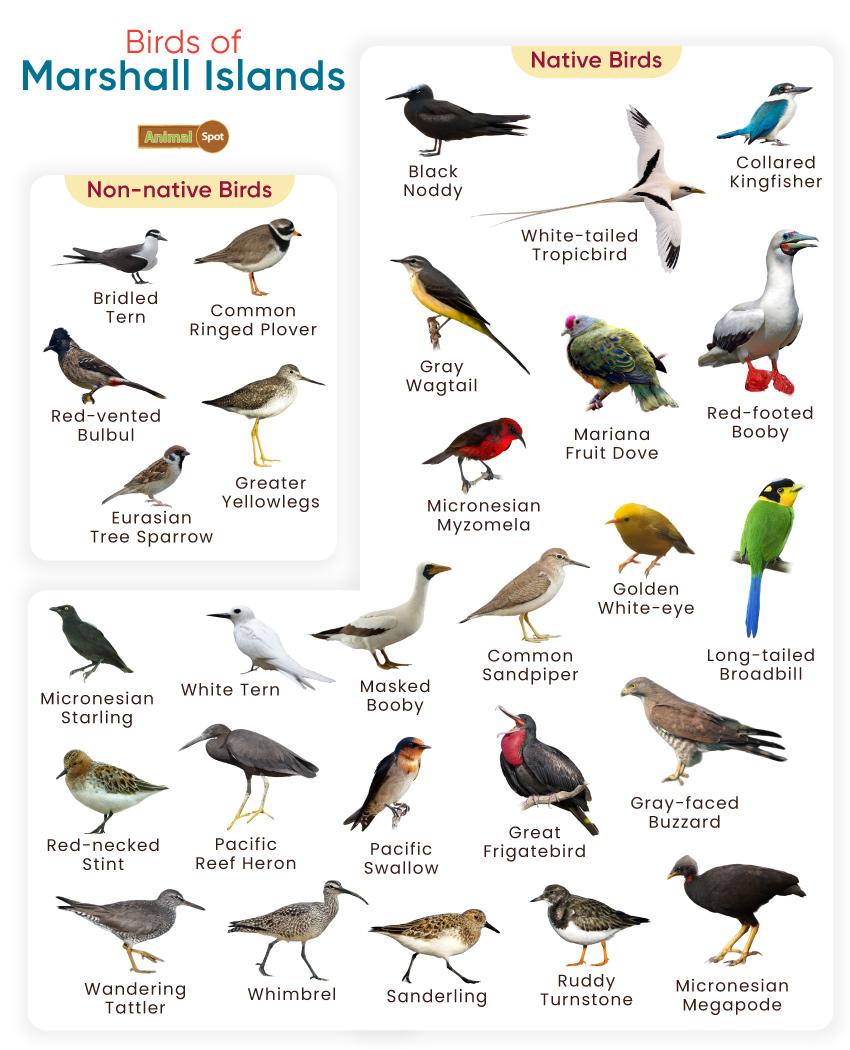Previously referred to as the Gilbert and Ellice Islands, Tuvalu is a Polynesian island with three reef islands and six atolls. Naturally, such a small nation only has about 40 or so bird species living on it or visiting it occasionally. This is probably because very little vegetation grows in the soil, with palm trees, creepers, and grass being the most common plants on the island.
Some notable avian species in Tuvalu include the Pacific Golden Plover, the Great Frigatebird, the Red-footed Booby, the Lesser Frigatebird, and the Brown Booby. The Red Junglefowl is the only bird that humans have introduced.
List of Common Birds Found in Tuvalu
Native Birds
- Bar-tailed Godwit
- Black-naped Tern
- Black Noddy
- Black-winged Stilt
- Bridled Tern
- Bristle-thighed Curlew
- Brown Booby
- Brown Noddy
- Brown Thrasher
- Buff-banded Rail
- Gray Heron
- Gray-tailed Tattler
- Great Crested Tern
- Great Frigatebird
- Lesser Frigatebird
- Pacific Black Duck
- Pacific Golden Plover
- Pacific Imperial Pigeon
- Pacific Long Tailed Cuckoo
- Pacific Reef Heron
- Pacific Swallow
- Polynesian Starling
- Red-footed Booby
- Ruddy Turnstone
- Sanderling
- Sooty Tern
- Wandering Tattler
- White-tailed Tropicbird
- White Tern
Non-native Birds
- Blue-gray Noddy
- Christmas Shearwater
- Common Ringed Plover
- Gray-backed Tern
- Mallard
- Masked Booby
- Phoenix Petrel
- Red Junglefowl
- Red-tailed Tropicbird
- Semipalmated Plover
- Tropical Shearwater
- Wedge-tailed Shearwater
- Whimbrel
Tuvalu is a small island nation with limited land area, so no designated birdwatching sites exist. However, different birds can be seen in some of the surrounding lagoons, coasts, and wetlands. These include the atolls of Nanumea, Funafuti, and Nui, as well as the lagoon and islets of Nukufetau and Nukulaelae. Birding might also be possible on the southernmost atoll of Niulakita, although local confirmation may be required.
Between November and March, during the wet season, which corresponds to the Southern Hemisphere summer, Tuvalu experiences higher temperatures and increased rainfall. The wet season can increase birds’ food availability, but the damp and stormy weather might also impact bird activity, with some species seeking shelter during heavy rains and strong winds.
On the other hand, during the dry season – from April to October – birds might congregate near the few remaining water sources where they become more visible but also leave the islands searching for food elsewhere.

